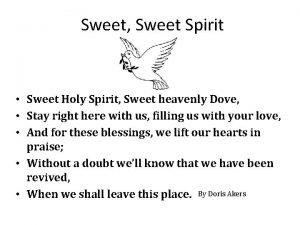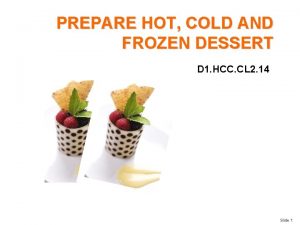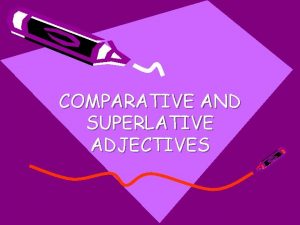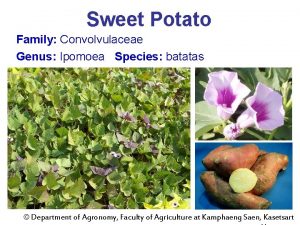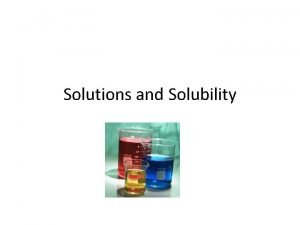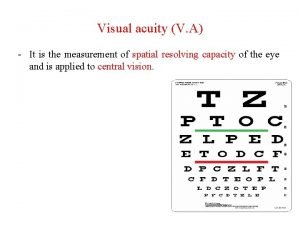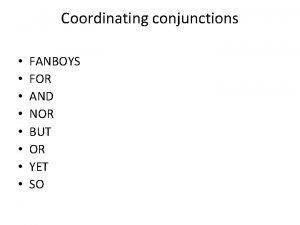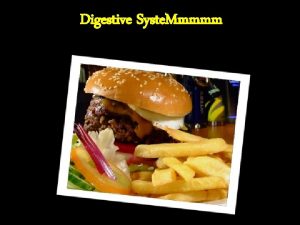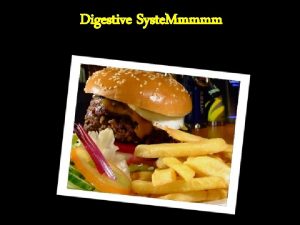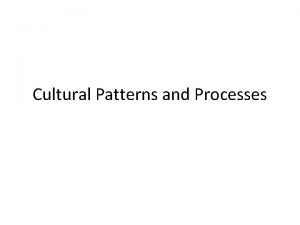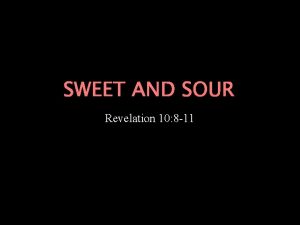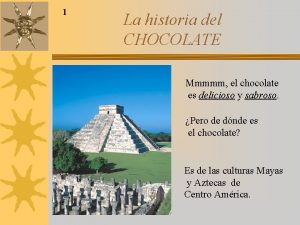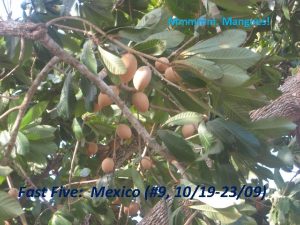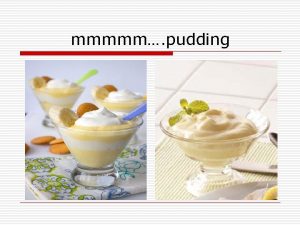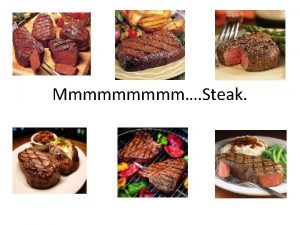Welcome to Mmmmm so sweet and yet so













- Slides: 13

Welcome to: Mmmmm -- so sweet and yet so starchy…

Carbohydrates are: Sugars end with suffix “-ose” n Produced by photosynthesis n Contain the elements: C, H, O or C(H 2 O) n

Monosaccharides: Simple sugars n Ex. Glucose n C 6 H 12 O 6 * very, very important! ¨ It is from this molecule that animals get their energy n Ex. Fructose C 6 H 12 O 6 “ 1”

All C 6 H 12 O 6 Notice that glucose and fructose have identical formulas but their structures are different.

Disaccharides “ 2” glucose – glucose = maltose n glucose – fructose= sucrose n glucose – galactose = lactose n

Polysaccharides “many” n Complex carbohydrates Long chains of monosaccharides

Storage Carbohydrates n Starch: complex, stores energy in plants “pearl necklace, each pearl = glucose” broken down into monosaccharides glu-glu-glu-glu-glu

Storage Carbohydrates n Glycogen – a branched chain of as many as 2000 glucose units. Storage form of glucose in animals.

Structural Carbohydrates n Cellulose: ¨ Structural compound in plant cell walls n ¨ ¨ ¨ found in wood and paper uses a modified form of glucose still a “string of pearls” cannot be broken down by the body

Structural Carbohydrates n Chitin: ¨ Structural carbohydrate in insect exoskeleton and fungal cell walls ¨ uses a highly modified form of glucose ¨ still a “string of pearls”

Starch vs cellulose…. identical in composition but not quite in structure. The bond joining the glucose units together is different…. our bodies can break the bond in starch/amylose to get at the individual glucose units but not in cellulose. Source: http: //www. rpi. edu/dept/bcbp/molbiochem/MBWeb/mb 1/part 2/sugar. htm

We tend to use the words “sugar” and “starch” and “carbohydrate” loosely. When we say a food is “high in carbohydrates” do we mean the food is high in “sugar” or “starch” or both? Potatoes and bread “starchy” foods and are “high in carbohydrates” due to the starch they contain. Fruits are “high in carbohydrates” but we would never say they were “starchy” - they contain almost all simple carbohydrates such as sucrose, fructose. We tend to say “high in carbohydrates” for foods with a high level of the complex carbohydrates known as starch. And for foods that have high levels of the simplex carbohydrates, we tend to say they are “high in sugar”. But sugar and starch are really the same thing! They’re both made from glucose.

Isomers
 Overlays mmmmm
Overlays mmmmm Sweet heavenly spirit
Sweet heavenly spirit Wise men three clever are we
Wise men three clever are we Prepare dessert and sweet sauces
Prepare dessert and sweet sauces Comparative and superlative sweet
Comparative and superlative sweet Convolvulaceae mango
Convolvulaceae mango Sweet tea solute and solvent
Sweet tea solute and solvent Hundreds and thousands sweet test
Hundreds and thousands sweet test Sweet clara and the freedom quilt summary
Sweet clara and the freedom quilt summary 100 sentences of present tense in hindi
100 sentences of present tense in hindi Cause connectives
Cause connectives Present perfect just already yet
Present perfect just already yet For, and, nor, but, or, yet so
For, and, nor, but, or, yet so Already ever never yet
Already ever never yet

